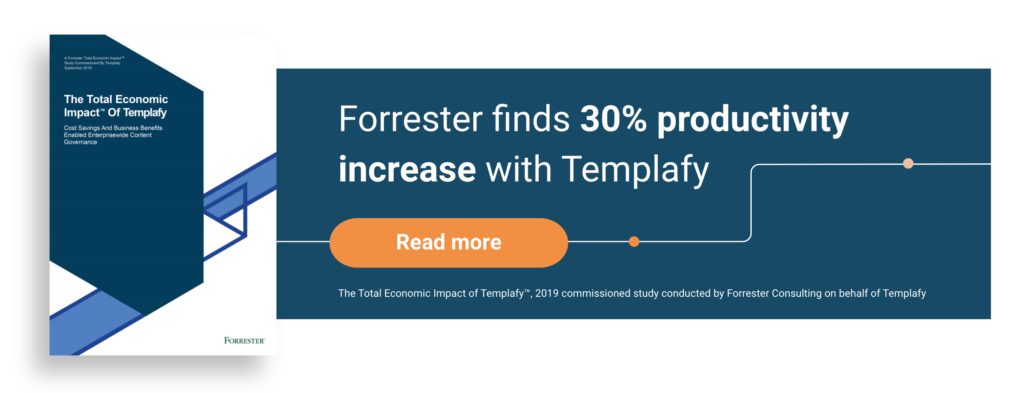Business enablement series: The platform play

What does IT utopia look like? Maybe it’s one perfectly integrated, perfectly secure system with 100% user adoption.
We may be five to ten years away from technological paradise, but the shift toward digital connectivity and away from fragmented IT infrastructures is clear.
Tech providers and app creators are broadening their scope, offering more services in an effort to grow from a spot solution to a full business enablement platform.
As enterprises work to simplify and streamline their tech stacks, providers want to ensure their solutions are comprehensive enough to make the cut.
Insatiable appetites
Okta’s latest Businesses at Work report revealed that, on average, large companies today deploy 175 different apps.
Of these apps, the most-used across companies of all sizes are those which bundle multiple services together, with Microsoft 365, Salesforce, and Google Workspace at the top of the list.
But if these platforms – which offer hundreds, if not thousands, of single functionalities – are so broad, why do companies need so many different tools?
One answer is that many companies are buying redundant applications. For example, 78% of Okta’s Office 365 customers also purchase “best of breed” apps to supplement functionality found in their other tech bundles. That means a company may add Slack or Box to their tech stack, even though they already have Microsoft Teams or OneDrive.
Of course, the more apps a company deploys, the greater the burden on their employees.
Five reasons tech adoption falls flat
Here is every IT manager’s worst nightmare: after months of planning, no one in the company is using the shiny new enterprise tool that’s just been deployed.
User adoption is the core KPI for any new platform, so why does tech adoption fail?
In our recent study, we explored the top five scenarios in which an employee chose not to adopt new technology.
- It decreased efficiency.
43% said that work actually took longer using the new tools than it did without them. - It was only a point solution.
45% said that the technology solved a specific problem that wasn’t relevant to their role. - Overall lack of training.
48% said they’d received no training on how to best use the new tools. - It wasn’t horizontal.
51% said there was a lack of consistent use across the entire company. - It didn’t fit into existing workflows.
55% said the new technology didn’t integrate with existing tools.
No wonder IT leaders are increasingly cautious about introducing new technologies to their organizations.
But this presents an opportunity for some of the biggest tech providers: companies are more likely to purchase additional services from a platform they already work with in an effort to minimize complexity and encourage adoption.

The total economic impact of Templafy
We asked Forrester to complete a Total Economic Impact study of our platform and they produced the numbers. Their study finds that organizations with 10,000 users see a 1,239% ROI after implementing Templafy.
If you can’t beat them, buy them
For technology providers, it’s a race to provide the most comprehensive and most widely adopted business enablement tech suite.
With so many point solutions on the market, many companies are choosing to buy rather than build these new functionalities, and the conditions for acquisitions are ideal. The pandemic has revealed glaring gaps in the digital proficiencies of many businesses, and many leaders see acquisitions as the fastest way to shore up their platforms.
Globally, mergers and acquisitions increased by almost 20% in the second half of 2020, compared to the first half of the year. In the past six years, Apple has acquired approximately 100 companies, averaging one acquisition every three or four weeks.
And while some companies have used acquisitions as a way to eliminate competition, the latest trends show that companies are strategically acquiring rivals as a way to expand and transform their entire business offering.
Looking ahead, 53% of business leaders say they plan to allocate more resources to mergers and acquisitions as a way to accelerate digital transformation.
Conclusion
Across the board, tech stacks are getting shorter as enterprises seek to simplify their IT infrastructures.
The result is the platformification of technology providers. Best-in-class spot solutions will either expand to offer a more horizontal service or they will be acquired and incorporated into existing tech platforms.
We may not ever reach Utopia, but this trend is a clear move in the right direction for companies who want to support connected business content and improve the end-user experience.
Download the business enablement report to learn more about the trend towards a more connected IT infrastructure. Or check out our other articles on business enablement here.
Data source: Templafy research
An online survey of adult full-time employees who work in companies of 100 employees or more, was conducted by Propeller Insights between March 26th and March 27th, 2021. Respondents opted into an online database, from there, they were targeted based on demographics. To further confirm qualifications, respondents were asked to verify their information in the survey itself, self-identifying qualifications, with the maximum margin of sampling error was +/- 3 percentage points with a 95 percent level of confidence.
***
This article is part of our series exploring the topic of business enablement. Follow our series right here as we focus on all aspects of the tech that’s set to define the future of work.



